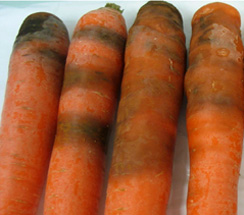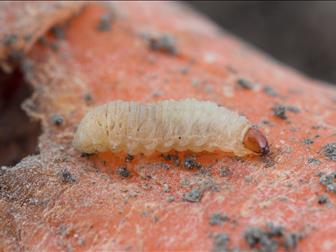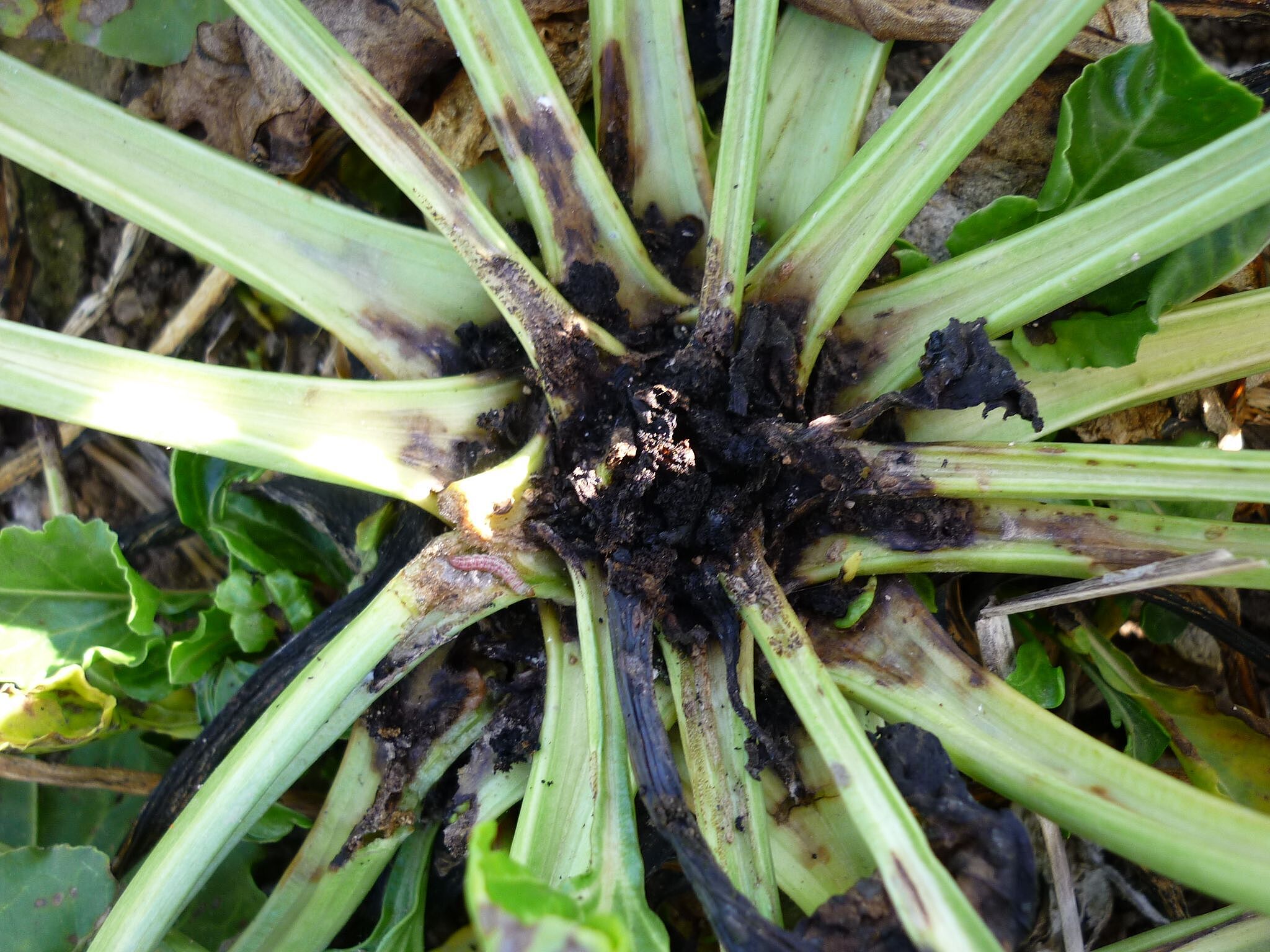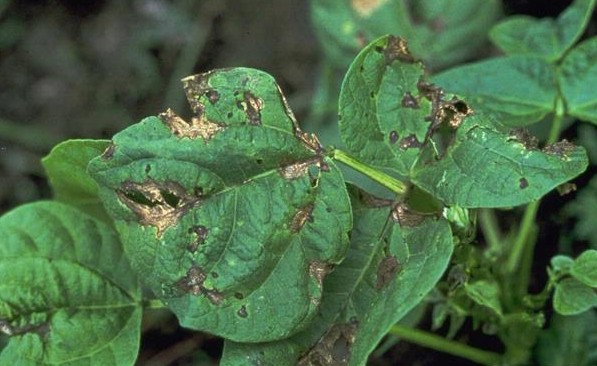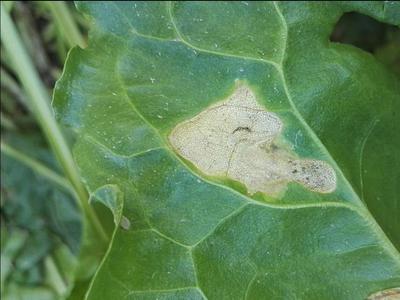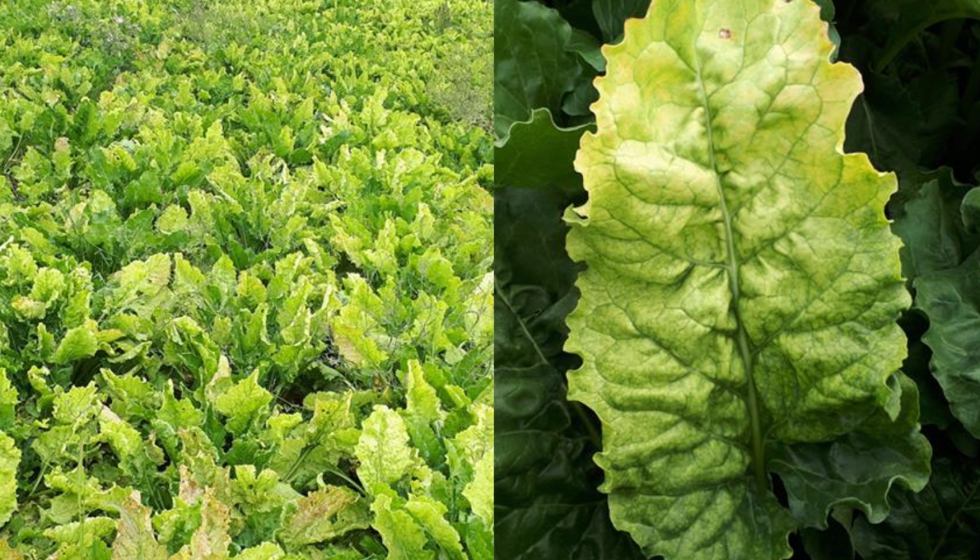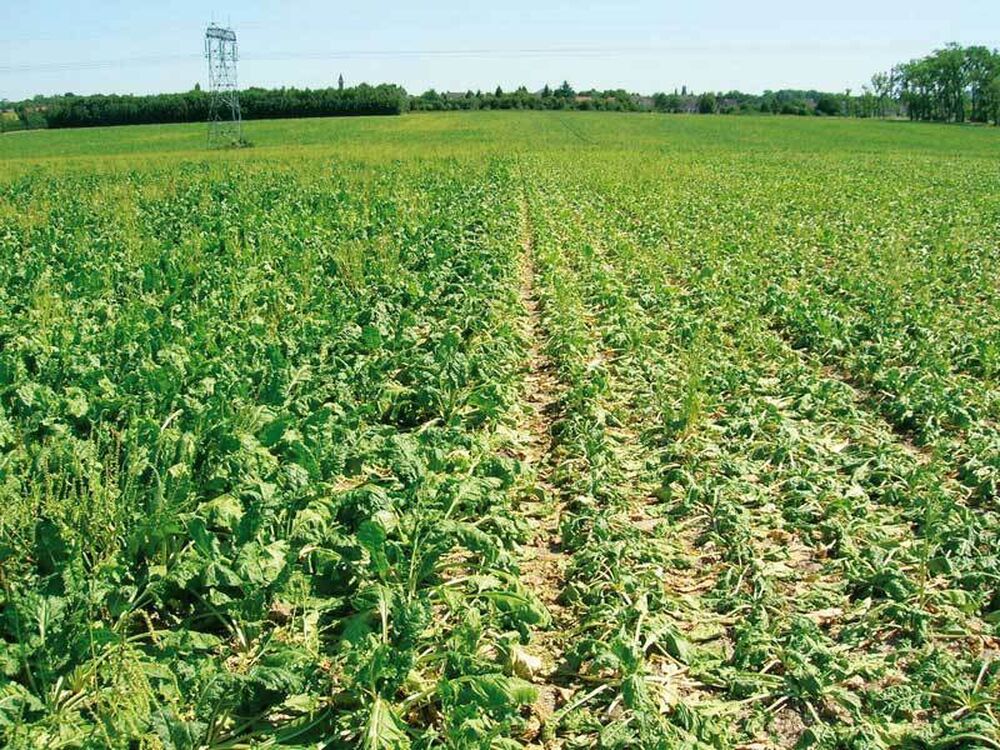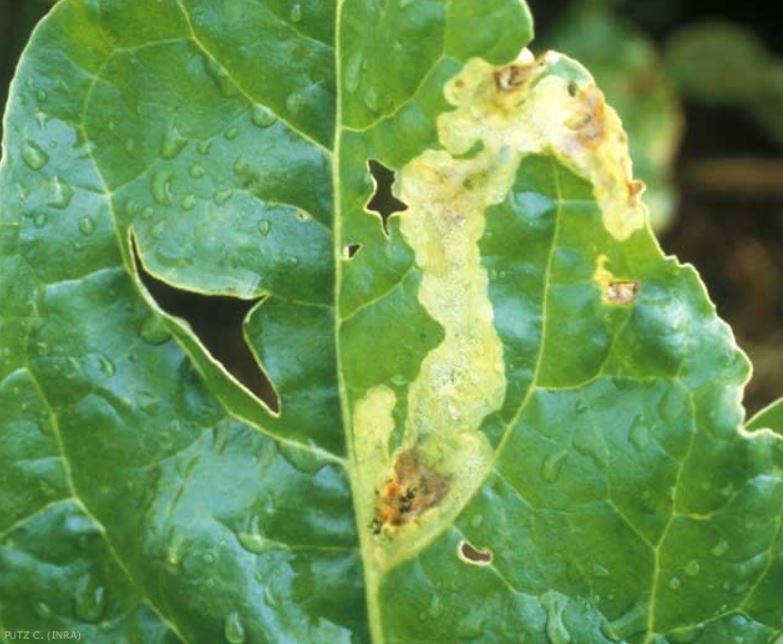
Zanahoria
How to recognize and combat powdery mildew on carrots
Powdery Mildew
Fungus
Type:
Risk to the plant:
HIGH
Erysiphe Heraclei
Pathogen:
Oídio

WHO CAUSES IT?
Erysiphe heraclei is an ascomycete fungus that causes powdery mildew on carrots and other plants. This fungus forms structures called cleistothecia in its sexual phase, which are spherical and contain asci with ascospores. During its asexual phase, E. heraclei produces conidia in chains that are dispersed by the wind. The conidia germinate on the leaf surface, where the fungus penetrates the epidermal cells and develops haustoria that extract nutrients from the plant. Primary infection may arise from hibernating spores that reactivate with the arrival of favorable conditions, generally moderate temperatures and high relative humidity. Once established, the mycelium of the fungus spreads over the surface of the plant, forming a characteristic whitish layer. The continuous production of conidia allows the infection to spread rapidly to other plants.
SYMPTOMS
The carrot powdery mildew disease, caused by Erysiphe heraclei, manifests itself with a white powdery coating on the leaves and stems. This layer is actually the mycelium and conidia of the fungus. Infection can lead to reduced photosynthesis, weakening of the plant and, in severe cases, death of leaves. Infected plants exhibit a reduction in growth and production of good quality roots, which directly impacts crop yield.
- Presence of white powder on leaves and stems.
- Yellowing of the leaves.
- Curling and deformation of the leaves.
- Reduction of plant growth.
- Decrease in the production and quality of the roots.
- Defoliation in severe infections.


DEVELOPMENT CONDITIONS
Temperature:
15-25°C
Humidity:
60-80%
HOW IS IT SPREAD?
Wind, Water, Contaminated tools, Infected plant material, Insect vectors
HOW TO ELIMINATE IT?
Home treatments
Natural allies
Chemical treatments
RECOMMENDED PRODUCTS TO ELIMINATE THE PEST
REPELLENT PLANTS
-
RECOMMENDATIONS
- Avoid wetting the leaves when watering, especially at night.
- Ensures good ventilation between plants.
- Remove infected leaves as soon as you see them.
- Use resistant varieties when possible.
- Apply natural fungicides such as sulfur, baking soda or horsetail extract.
- Check your plants frequently, especially in hot and dry climates.



